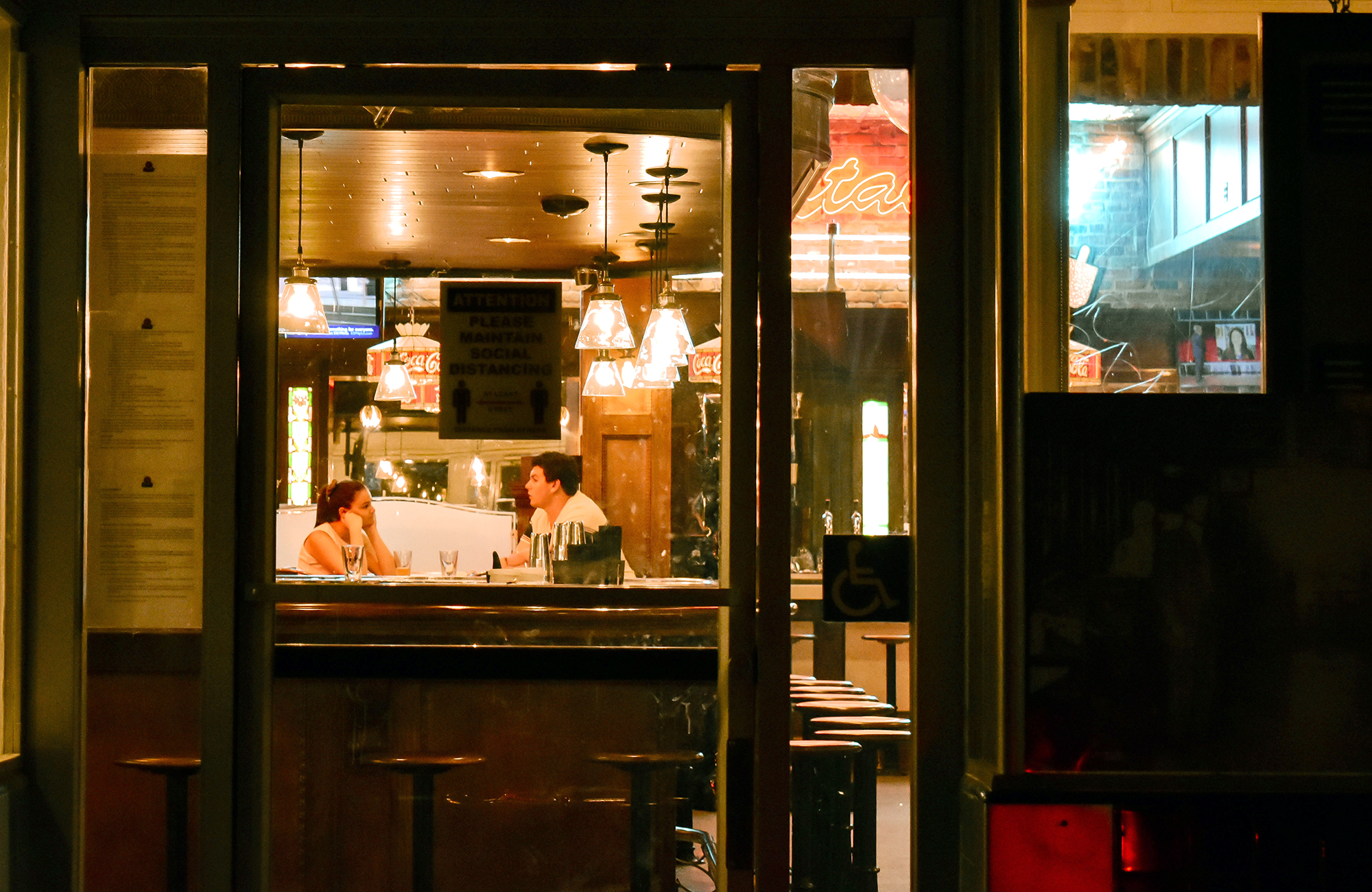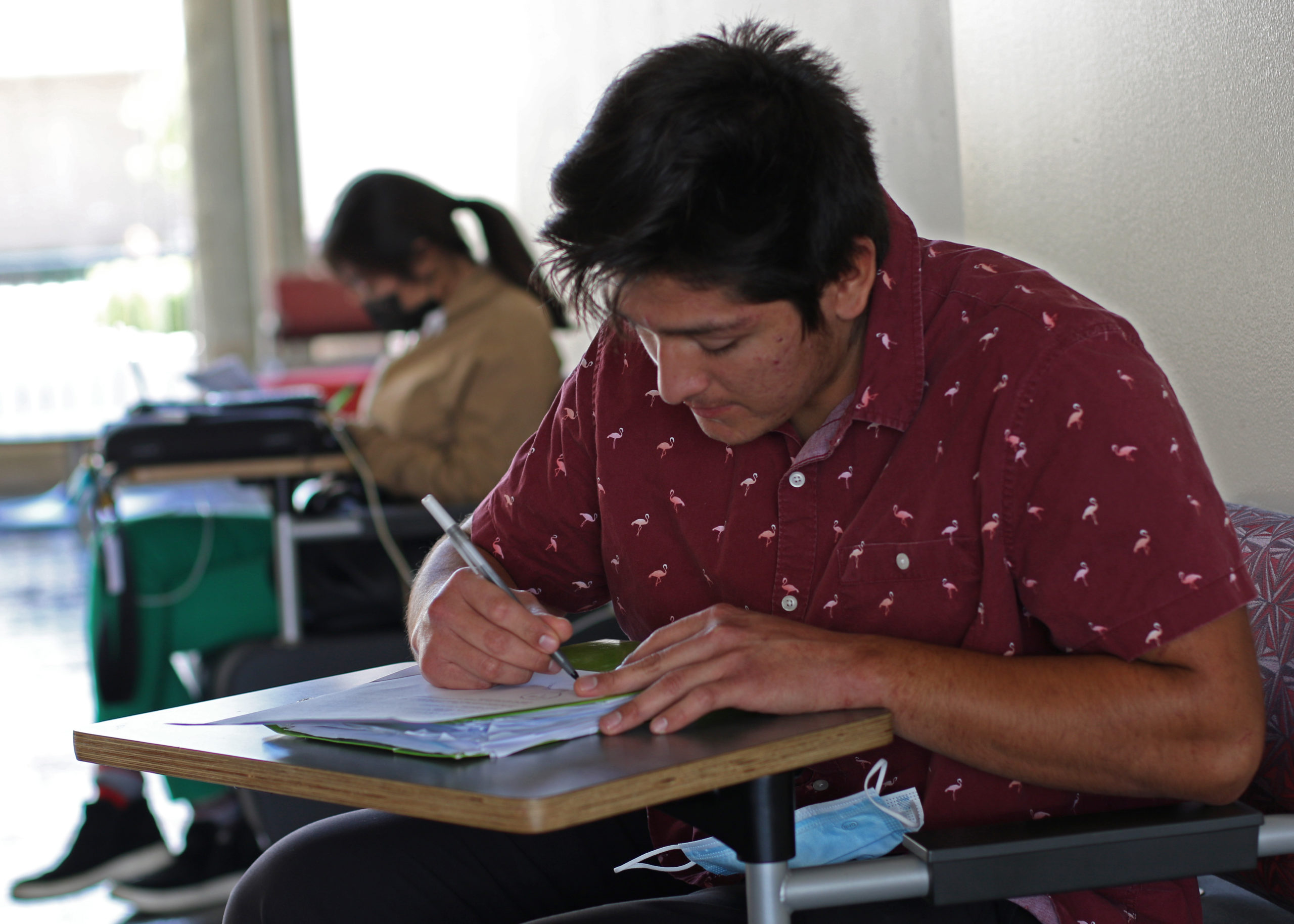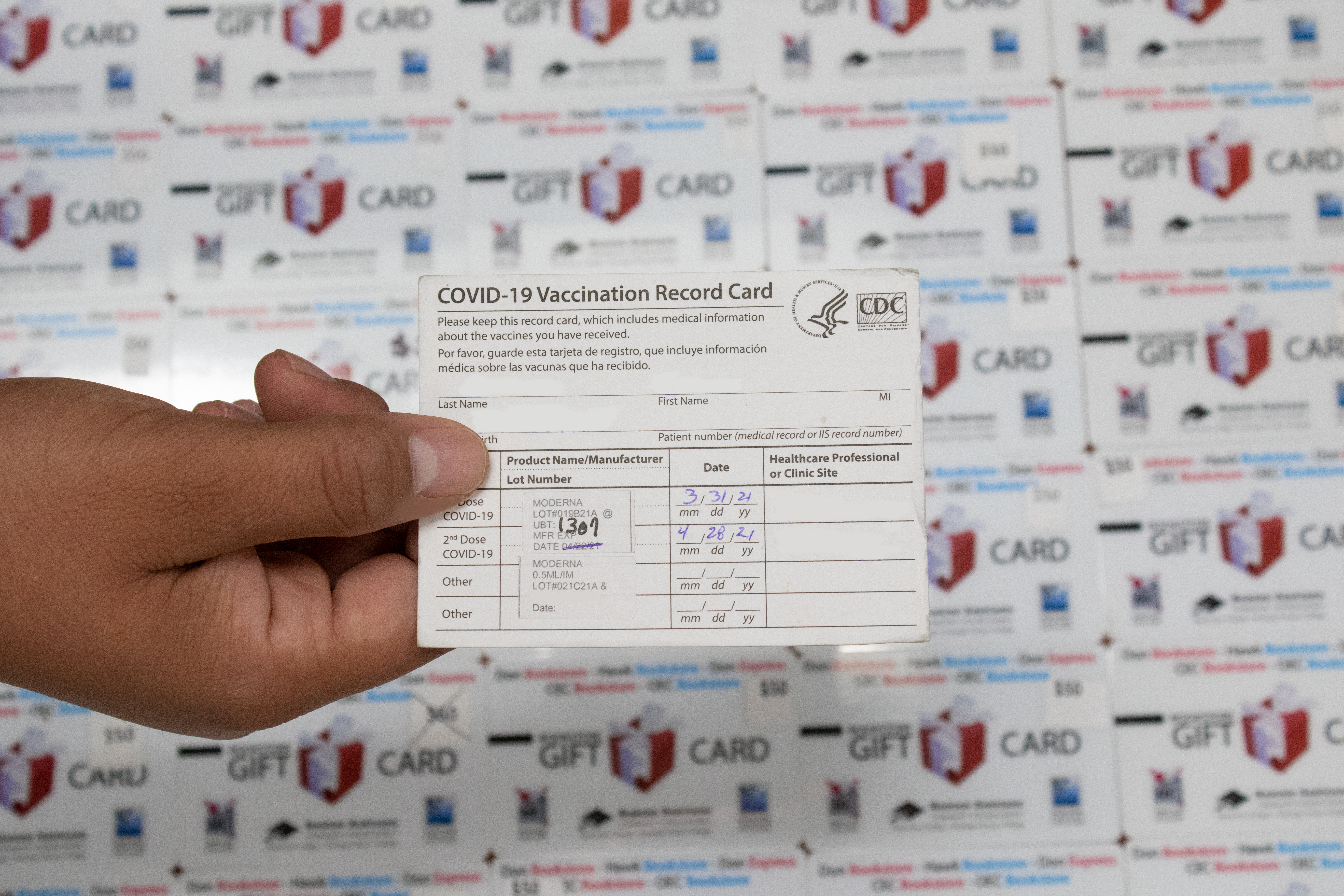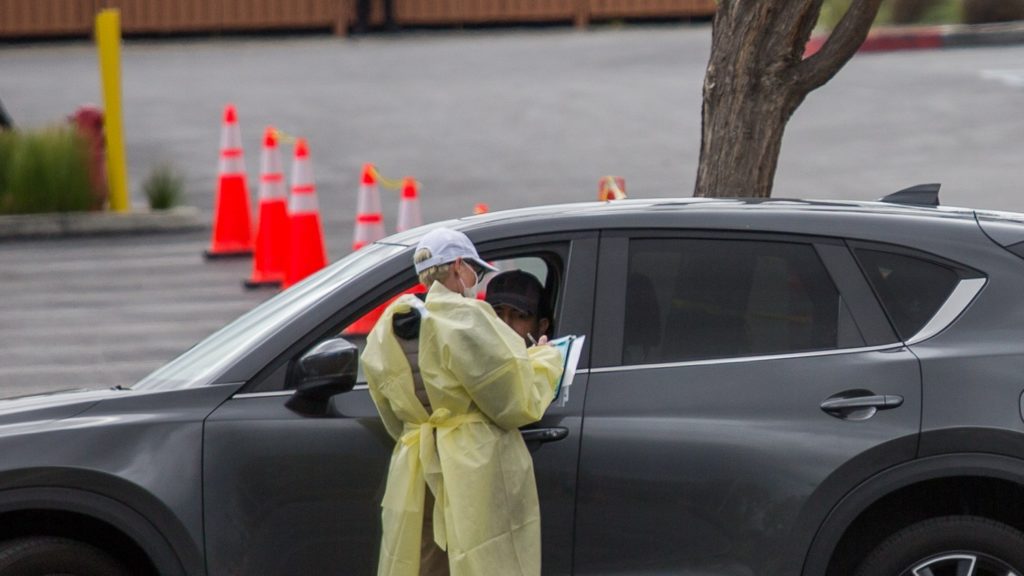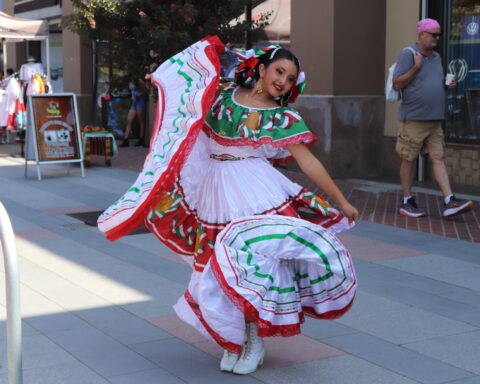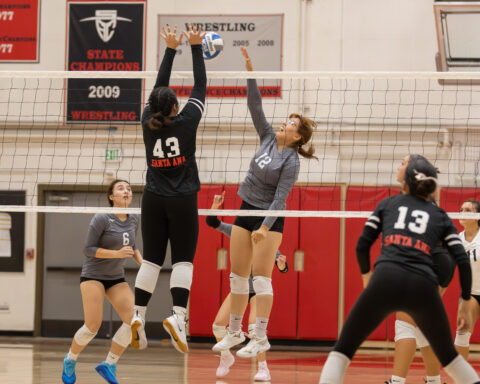Shopping malls, swap meets, dine-in restaurants and more non-essential, low-risk businesses in Orange County received the green light to reopen Saturday after the state approved a comprehensive plan that includes disinfection, masks and social distancing.
By Monday, groups of un-masked diners could be found properly spaced out inside and on outdoor patios of restaurants and food-serving bars from downtown Santa Ana to Orange to Fullerton.
OC officials pushed back on strict state guidelines all month, but could only apply for an exemption after Gov. Newsom announced looser criteria last week. The county was able to easily satisfy the state’s first criteria: that hospitals see no more than a 5% increase in COVID-19 admissions over a one-week period. But at the time of submission, the county barely cleared the other major reopening requirement — having a less than 8% positive rate — by a fraction of a percent. Despite increased capacity, OC’s testing per capita has been lower than surrounding counties since the pandemic began.
Orange County was one of 29 California counties that received the governor’s approval for their variance plans over the weekend. Here’s what that means for you:
What’s open now
Stage 2 of the state’s Resilience Roadmap includes shopping malls and swap meets, dine-in restaurants (excluding bars without food and game rooms), offices where telework hasn’t been possible, outdoor museums and open-air galleries, along with some personal services, currently limited to pet grooming, tanning salons, car washes and landscape gardening.
In a separate county order, churches are allowed to resume services with up to 100 congregants, or 25% of their capacity, whichever is lower.
Still not open: higher-risk workplaces such as personal care and recreational venues. Schools, movie theaters, gyms, indoor museums and more.
Masks are required
Effective midnight on Saturday, all Orange County residents and visitors are required to wear a cloth face-covering when in a public place, visiting a place of business or at work. Masks are now required in any situation when you are not able to maintain at least 6 feet of physical distance from another person who is not a family/household member or live in the same living unit.
“The Order includes necessary preventative measures to control and reduce the spread of COVID-19 in our community and help preserve the capacity in our local health care system, which was one of the metrics the California Department of Public Health took into account before approving our plan to move deeper into Stage 2 of re-opening Orange County,” County Health Officer Dr. Nichole Quick said in a press release announcing the order.
Schools are closed
While schools and childcare are also included in phase two, many districts are struggling to find a practical balance between the precautions mapped out by the state and the financial ability to institute them. The state is facing a $54 billion deficit, which will inevitably trickle down to public schools. Many colleges have begun announcing their ideas of what the fall semester will look like. The majority of classes at SAC will be offered online, but nothing is set in stone.
Beach access
While beach access remains limited to those engaged in “active recreation,” the beaches themselves are becoming more accessible. With the exception of San Clemente, most beaches in OC have reopened their parking lots at partial capacity and are extending back to regular opening hours.
Contact tracing
To help track and contain the spread of the virus the county is expected to have 15 contact tracers per every 100,000 residents, which comes to a total of 476.4 contact tracers for the entire county population. While there are only about 100 currently employed, another 125 Public Health Services staff are trained and can be called on if needed. PHS is presently working to train the remaining staff needed, and expects to reach the 477 target by July 1.
Medical capacity
Another major concern during the pandemic has been the capacity of the medical system to accommodate both standard health care and COVID patients. The county says its hospitals are operating at a lower than normal capacity and have the PPEm staff, and equipment to handle a 60%-70% surge if needed.
Skilled nursing facilities
About 40% of OC’s deaths have been attributed to skilled nursing facilities, a share that rose last week as the county reported its highest one-day death counts to date. To combat the spread of the virus in SNFs, the county has contracted with six staffing agencies to ensure there are no gaps in staffing. Additionally, per the submitted plan, the county says it, “has hired a team consisting of multiple physicians and infection preventionists who will conduct an onsite assessment within 24-48 hours for any facility that has more than one resident testing COVID-19 positive.”
All 73 SNFs in OC were also expecting shipments of supplies from FEMA within the week.
When to loosen more restrictions
To consider loosening the restrictions further, county health officials will be watching for three key aspects: the ability of the medical system to return to providing routine care, a stable or declining rate of new cases over a 14-day period, and a stable or declining rate of deaths reported over that same length of time.
When to tighten restrictions again
Alternatively, the county may see restrictions tighten again if either of those numbers climb without explanation over a 2-week span, or if the health care system needs to switch back to crisis care to handle the flow of patients.
Orange County’s COVID-19 Stage 2 Variance Attestation Form (Text)
- Get your parking pass to avoid a ticket - February 13, 2024
- Vaccine mandate suspended for students and staff - November 23, 2022
- Cannabis cloud kitchen helps entrepreneurs break into the industry - November 2, 2022


